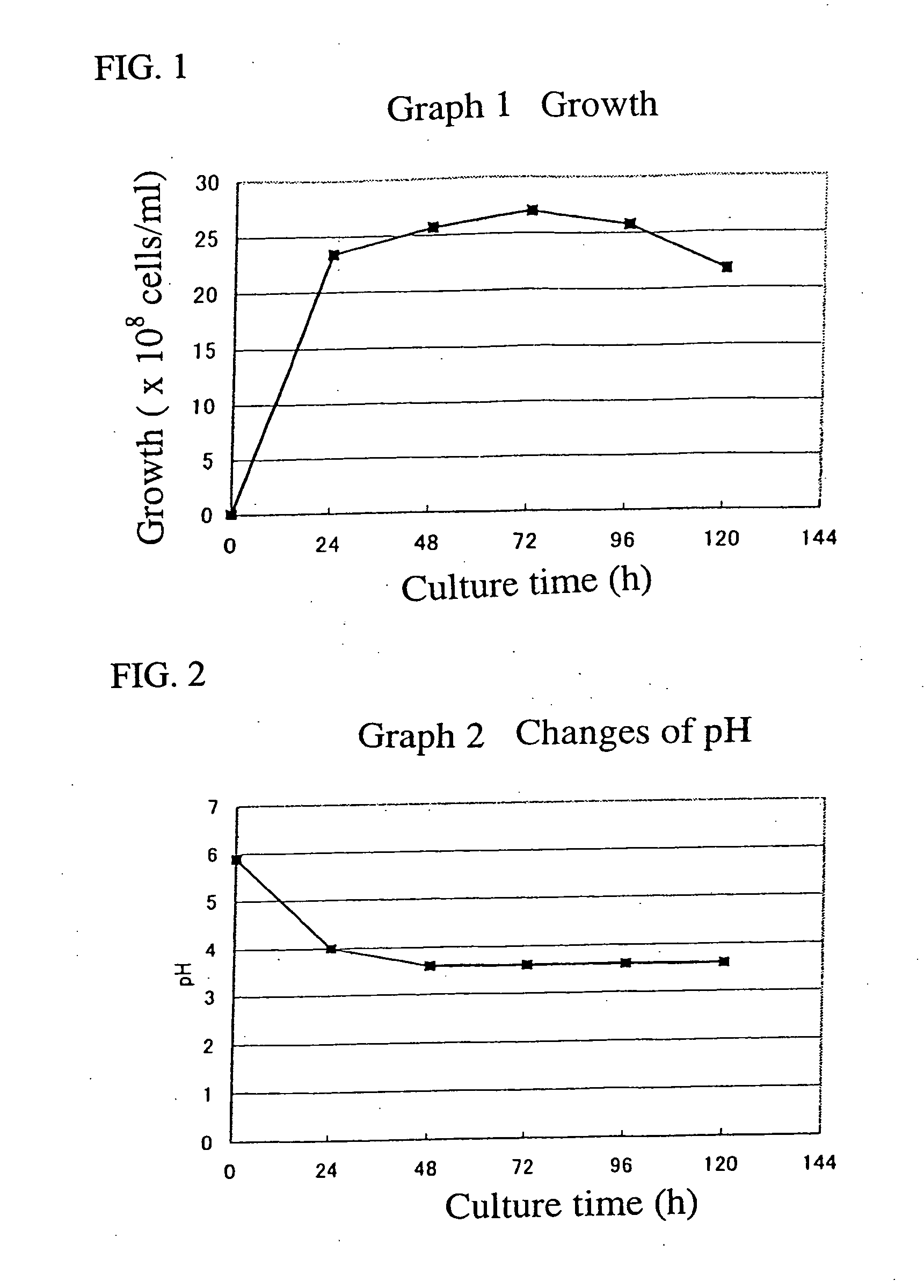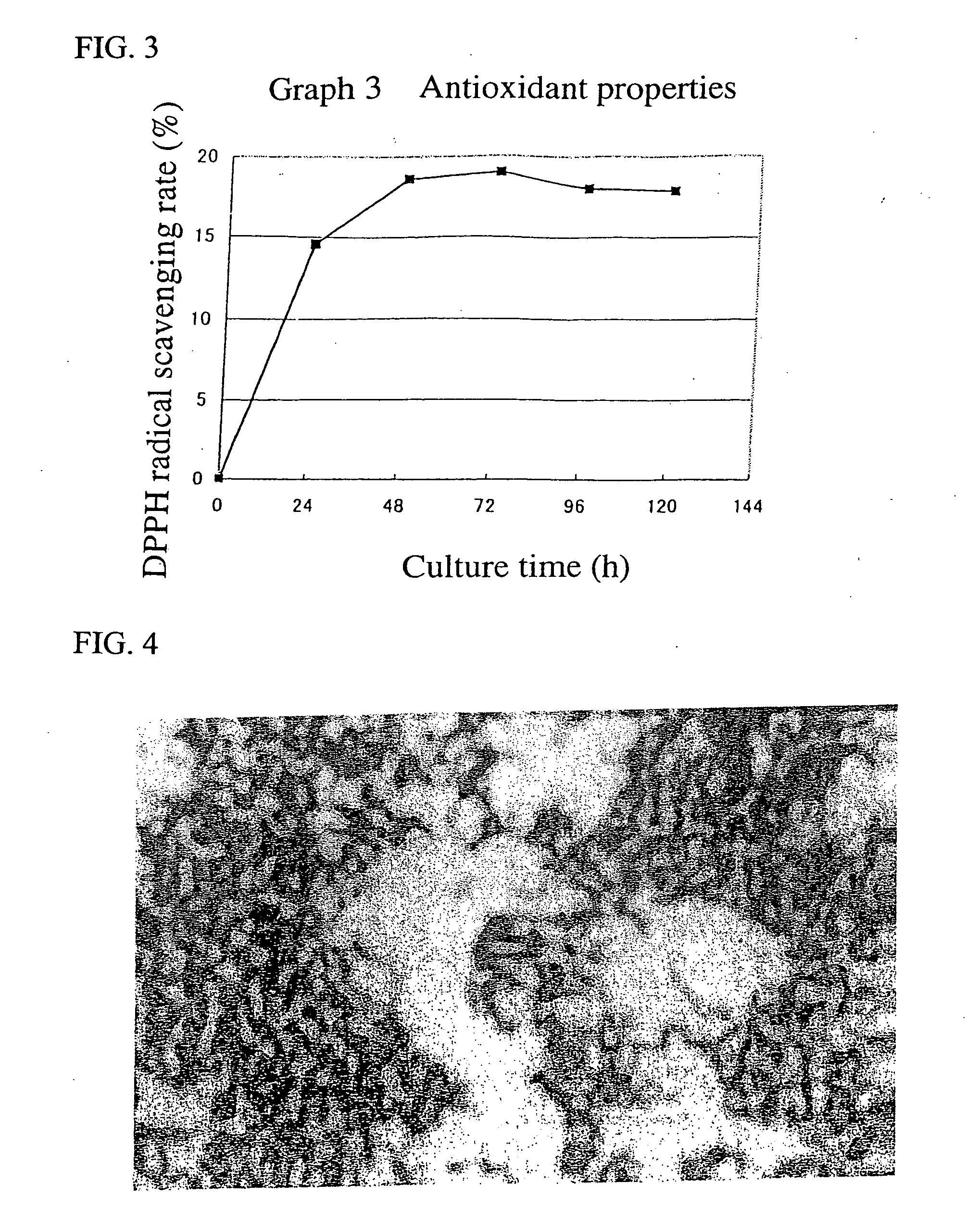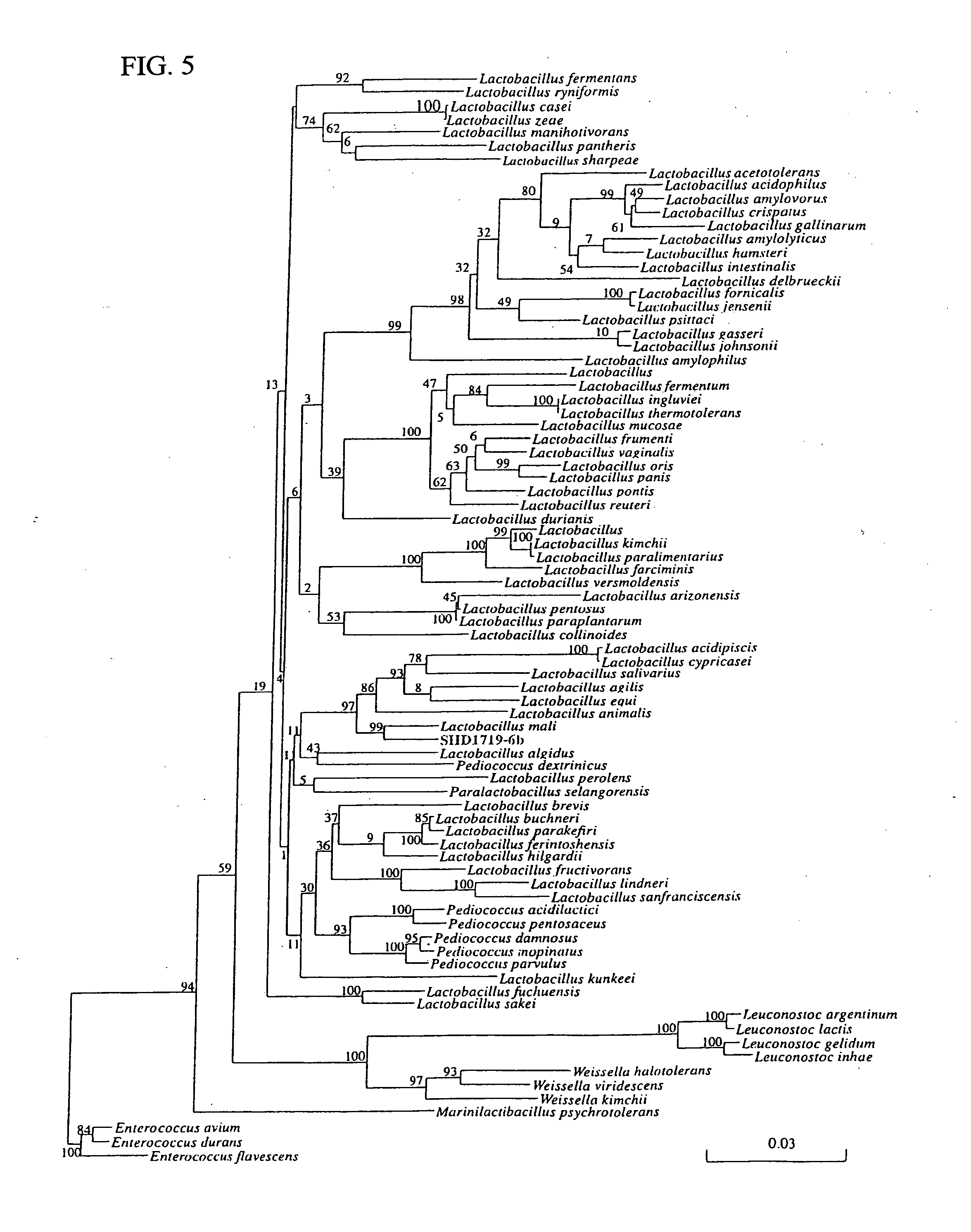Microorganism separated from Kefir grains, a microorganism culture obtained by culturing said microorganism or microorganisms including it, and a product using such microorganisms or microorganism cultures
a technology of kefir grains and microorganisms, applied in the field of antioxidant microorganisms, can solve the problems of product color and flavor, product color to brown or fade, product nutrition value to decline, etc., and achieve the effects of preventing in vivo oxidization, preserving product quality, and preventing oxidization
- Summary
- Abstract
- Description
- Claims
- Application Information
AI Technical Summary
Benefits of technology
Problems solved by technology
Method used
Image
Examples
Embodiment Construction
[0039] Preferred embodiments of the present invention will now be explained.
[0040] Strains of microorganisms separated from Kefir grains include Acetobacter cerevisiae SIID1719-2b, Gluconobacter oxydans SIID1719-3b, Lactobacillus sp. SIID1719-6b, which is a new species of the Lactobacillaceae family, Pichiamembrani faciens SIID1719-1y, Saccharomyces cerevisiae SIID1719-4y and Picchia anomala SIID1719-5y.
[0041] In order to find out whether microorganisms separated from Kefir grains and a microorganism culture obtained in a single culture of Lactobaccilus sp. SIID1719-6b, which is a new species of the strain Lactobacillaceae family, have antioxidant properties, we conducted the following evaluation tests. As a result, we found that these microorganisms and the Lactobacillus sp. SIID1719-6b itself have antioxidant properties. Moreover, active principles of the culture that is removed of bacteria in a centrifugal separator and sterilized using a sterilizing filter were also found to h...
PUM
| Property | Measurement | Unit |
|---|---|---|
| temperature | aaaaa | aaaaa |
| antioxidant properties | aaaaa | aaaaa |
| antioxidant effects | aaaaa | aaaaa |
Abstract
Description
Claims
Application Information
 Login to View More
Login to View More - R&D
- Intellectual Property
- Life Sciences
- Materials
- Tech Scout
- Unparalleled Data Quality
- Higher Quality Content
- 60% Fewer Hallucinations
Browse by: Latest US Patents, China's latest patents, Technical Efficacy Thesaurus, Application Domain, Technology Topic, Popular Technical Reports.
© 2025 PatSnap. All rights reserved.Legal|Privacy policy|Modern Slavery Act Transparency Statement|Sitemap|About US| Contact US: help@patsnap.com



